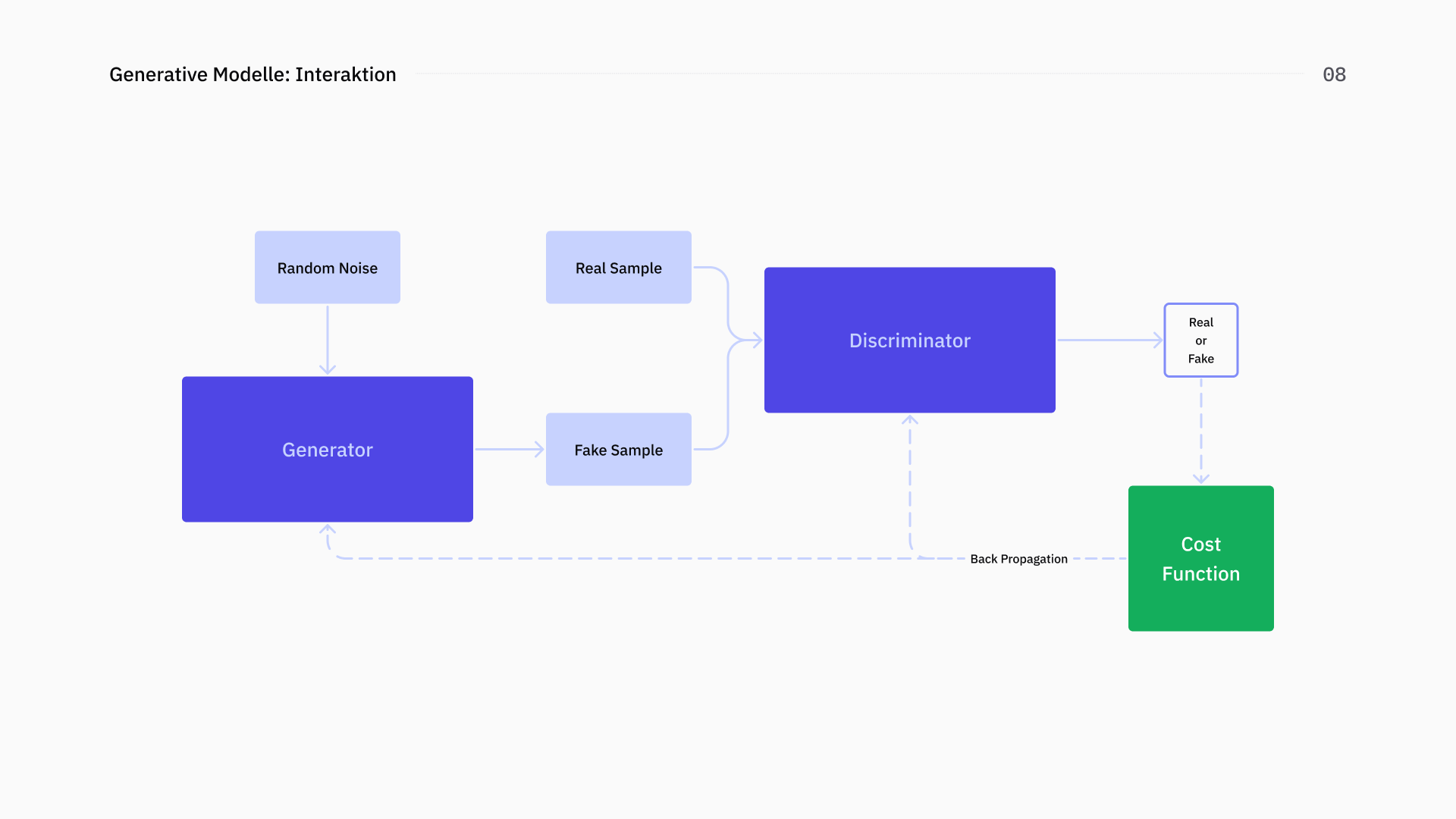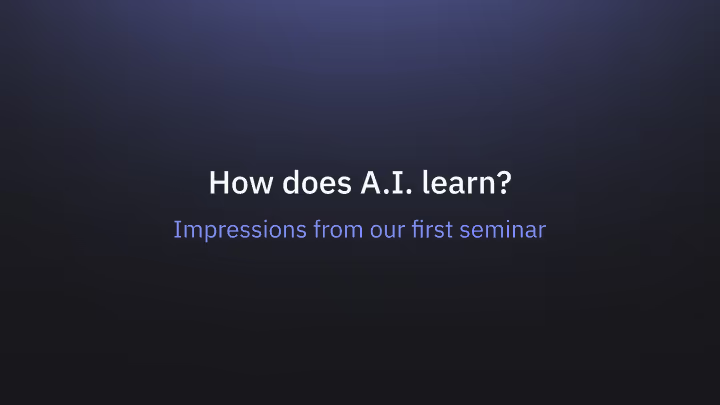In August, we had the opportunity to give colleagues at the communications agency neuwaerts a deeper look into the theory behind machine learning and artificial intelligence in general.
Contents
Under the direction of Henrik Bartsch, we introduced central concepts and terms on this topic in a total of two hours and addressed questions and related content.
In detail, the following topics were covered:
- Introduction
- What is “Artificial Intelligence”?
- Fundamentals of Machine Learning.
- Supervised Learning
- Semi-Supervised Learning
- Unsupervised Learning
- Reinforcement Learning
- Neural Networks and Deep Learning.
In addition, the following related content has been added as optional content and discussion topics:
- Minimizing the Error Function.
- Selection of Models in Machine Learning.
- Ethics and Bias in Machine Learning.
- Functionality of Generative Models
- Transition to the Future.
Procedure
The aim of the seminar was to familiarize A.I. users with the processes and technology behind these new technologies and services and, above all, to clear the fog around how these topics work and the risks involved.
The seminar started with an introduction of the seminar leader Henrik Bartsch, who gave a short insight into himself and his motivation for this seminar.
As an introduction to the main topic, definitions of terms were established, known and unknown services were introduced, and the general advantages and disadvantages of A.I. models were discussed.
As the seminar progressed, building on the previous slides, more complex topics and terms were introduced, illustrated with interactive graphics and some strategically placed memes.
Memes, in particular, were used to present various issues in an entertaining but understandable way, while also lightening the atmosphere surrounding the topics discussed.

A meme posing the question of humanity to A.I. “Is this something that will soon replace us all?”
After the main topic was completed and time remained, participants were given the opportunity to vote on the optional topics.
Here, an interest in Ethics and Bias in Machine Learning and Functionality of Generative Models emerged in particular.
We had already provided reflections on the ethics of artificial intelligence in our article from May 2, 2022 (Working with Artificial Intelligence: Risks & Side Effects), so we were able to take the opportunity here to delve into the current situation and changes in perception.
The Functionality of Generative Models in the context of creative work with generation services such as Midjourney was also explained in more detail with clear graphics and relevant examples from the industry.

Experience
Since the topic of how artificial intelligence learns is very complex and extensive, it was a pleasant challenge for us to prepare this content in a simple, entertaining and, above all, accessible way.
It was helpful to have a feedback culture that kept these three points in the foreground and checked the content created against these criteria.
The planning and exchange about the process and the presented content took place in Google Docs and Figma. Both tools stood out in the creation process for their real-time collaboration features and accessibility, and will likely accompany us in future projects.
In conveying the content, we aimed to answer questions early on and eliminate ambiguities.
The direct feedback from the participants after the seminar gave us the opportunity to answer any unanswered questions and gain first-hand insights into our knowledge transfer.
TL;DR
Our seminar provided insight into the functionality and application of various A.I. models, covered generative models, and discussed the ethics of the content presented. We look forward to future projects benefiting from the experience gained.


